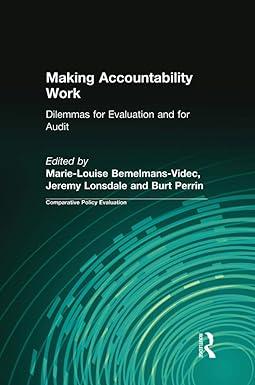 Anything helps!
Anything helps!
Romo Associates versus Concord Falls omo Associates, Inc., a property development firm, purchased an old house near the town square in Concord Falls, where State University is located. The old house was built in the mid-1800s, and Romo Associates restored it. For almost a decade, Romo has leased it to the university for academic office space. The house is located on a wide lawn and has become a town landmark R However, in 2008, the lease with the university expired, and Romo Associates decided to build high-density student apartments on the site, using all the open space. The community was outraged and objected to the town council. The legal counsel for the town spoke with a representative from Romo and hinted that if Romo requested a permit, the town would probably reject it. Romo had reviewed the town building code and felt confident that its plan was within the guidelines, but that did not necessarily mean that it could win a lawsuit against the town to force the town to grant a permit. The principals at Romo Associates held a series of meetings to review their alternatives. They decided that they had three options: They could request the permit, they could sell the property, or they could request a permit for a low-density office building, which the town had indicated it would not fight. Regarding the last two options, if Romo sells the house and property, it thinks it can get $900,000. If it builds a new office building, its return will depend on town business growth in the future. It feels that there is a 70% chance of future growth, in which case Romo will see a return of $ 1.3 million (over a 10-year planning horizon); if no growth (or erosion) occurs, it will make only $200,000. If Romo requests a permit for the apartments, a host of good and bad outcomes are possible. The immediate good outcome is approval of its permit, which it estimates will result in a return of $ 3 million. However, Romo gives that result only a 10% chance that it will occur. Alternatively, Romo thinks there is a 90% chance that the town will reject its application, which will result in another set of decisions. Romo can sell the property at that point. However, the rejection of the permit will undoubtedly decrease the value to potential buyers, and Romo estimates that it will get only $700,000. Alternatively, it can construct the office building and face the same potential outcomes it did earlier, namely, a 30% chance of no town growth and a $200,000 return or a 70% chance of growth with a return of $1.3 million. A third option is to sue the town. On the surface, Romo's case looks good, but the town building code is vague, and a sympathetic judge could throw out its suit. Whether or not it wins, Romo estimates its possible legal fees to be $300,000, and it feels it has only a 40% chance of winning. However, if Romo does win, it estimates that the award will be approximately $1 million, and it will also get its $3 million return for building the apartments. Romo also estimates that there is a 10% chance that the suit could linger on in the courts for such a long time that any future return would be negated during its planning horizon, and it would incur an additional $200,000 in legal fees. If Romo loses the suit, it will then be faced with the same options of selling the property or constructing an office building. However, if the suit is carried this far into the future, it feels that the selling price it can ask will be somewhat dependent on the town's growth prospects at that time, which it feels it can estimate at only 5050. If the town is in a growth mode that far in the future, Romo thinks that $900,000 is a conservative estimate of the potential sale price, whereas if the town is not growing, it thinks $500,000 is a more likely estimate. Finally, if Romo constructs the office building, it feels that the chance of town growth is 50%, in which case the return will be only $1.2 million. If no growth occurs, it conservatively estimates only a $100,000 return. A. Perform a decision tree analysis of Romo Associates' decision situation, using expected value, and indicate the appropriate decision with these criteria. Build your Decision Tree using the Decision Tree tools in Risk Solver. B. Indicate the decision you would make and explain your reasons
 Anything helps!
Anything helps!





